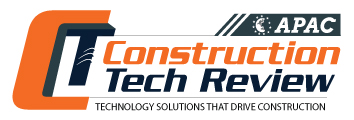THANK YOU FOR SUBSCRIBING

Driving Innovation in Construction through BIM and 3D Design
Michael Day, Head of BIM & 3D Design at PERI

 Michael Day, Head of BIM & 3D Design at PERI
Michael Day, Head of BIM & 3D Design at PERIMichael Day is the Head of BIM and 3D Design at PERI, where he leads the charge in driving innovation and efficiency within the construction and technology sectors. His journey in this field has been shaped by a diverse range of experiences, beginning as a design engineer (BIM), where he gained hands-on expertise with various BIM software and workflows.
Through this article, Michael highlights major trends like AI and VR, challenges with data standardization and the importance of continuous training and technology alignment in construction projects.
Insights into My Professional Journey
My journey to becoming the Head of BIM and 3D Design at PERI has been a culmination of diverse experiences in the construction and technology sectors. Before my current role, I gained hands-on experience with various BIM software and workflows as a Design Engineer (BIM).
Over time, I progressed to project management roles, where I honed my skills in leveraging BIM for complex construction projects. These experiences equipped me with a deep understanding of how BIM can revolutionize the construction industry. And I hope my work can drive innovation and efficiency through advanced BIM practices.
Trends and Technological Advancements Shaping the BIM and 3D Design Space
The BIM and 3D design space is witnessing significant advancements driven by technologies such as artificial intelligence, machine learning, and real-time collaboration tools. These technologies are enabling greater automation, accuracy, and efficiency in project planning, design, and execution. Additionally, the integration of BIM with Internet of Things (IoT) devices and virtual reality (VR) is revolutionizing how stakeholders interact with construction projects, leading to improved decision-making and enhanced project outcomes.
The Challenges and Strategies to Address Them
With more technologies being adopted to our daily work, one of the biggest challenges in the BIM and 3D design domains is the need for standardized data formats and interoperability among different software platforms. As we look to the future, ensuring seamless data exchange and collaboration across disciplines will be crucial.
At PERI, we are proactively investing in training our teams on industry standards and best practices, as well as exploring different solutions to address these challenges effectively.
The Technology Stack at PERI
At PERI, our technology stack includes some of the industry-leading software like Autodesk Revit. We have chosen these tools based on their robust capabilities, interoperability, and industry acceptance. Additionally, we leverage cloud-based collaboration platforms to facilitate real-time communication and coordination among project stakeholders.
Advice for Professionals Adopting Emerging Construction Technologies
My advice would be to start with a clear understanding of project requirements and objectives. It's essential to align technology adoption with specific project goals to maximize benefits. Additionally, investing in continuous training and upskilling of teams is crucial to ensuring successful implementation. Key considerations include data security, scalability, and compatibility with existing workflows. It's important to start small, pilot new technologies, and gradually scale based on project success metrics to avoid potential pitfalls and ensure a smooth transition to advanced BIM practices.
Read Also
Development of the Logistics Warehousing Market in Brazil
Driving Innovation and Preserving Tradition
Operational Leadership VS Field Leadership in the Utility Construction Business
People-First Innovation: Developing Virtual Design and Construction (VDC) Training Programs to Empower Field Team Members
Sustainable Projects: Aligning Business and Purpose in Latin America
Engage Smarter: Why Constraints Matter More Than Hazards

 Copyright © 2025 All Rights Reserved | by:
Copyright © 2025 All Rights Reserved | by: Construction Tech Review
| Subscribe | About us | Sitemap| Editorial Policy| Feedback Policy


![Ramon Parchment, Project Manager, AECOM Tishman [NYSE: ACM] Bridging the Gap: How Artificial Intelligence (A.I.) Can Revolutionize Procurement in Construction](https://www.constructiontechreviewapac.com/newstransfer/upload/360x247_C0AG.jpg)











